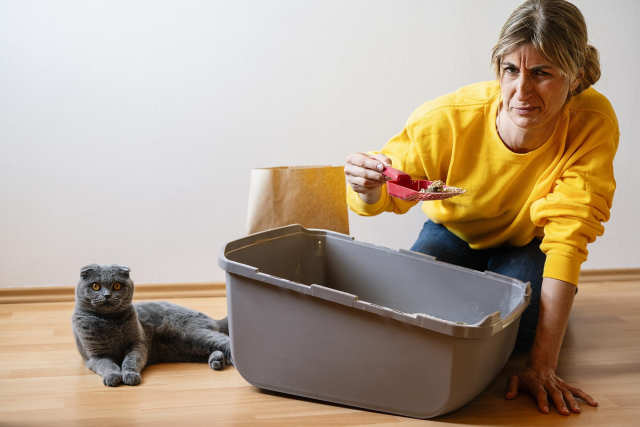
The cat litter industry is undergoing a rapid transition with more and more pet owners seeking eco-friendly options. Biodegradable litters made from wood, paper, corn, and other natural materials are becoming popular among consumers. This is due to their eco-friendliness and other benefits.
Do emerging statistics support the transition towards natural cat litter? The answer is without any doubt positive. According to Coherent Market Insights, the global cat litter industry is set to witness a CAGR of 4.2%, totaling US$ 6.82 billion by 2030. Transition towards eco-friendly cat litter options is expected to play a key role in this future growth.
Switching to natural cat litter can have a positive impact on your cat’s health and environment. However, like any change, it has its advantages and disadvantages. Understanding eco-friendly cat litter pros and cons can help cat owners to informed decisions.
Natural Cat Litter Benefits
- Environmental Friendliness
Majority of natural cat litters are biodegradable and compostable. These litters are often made from renewable sources like corn and paper. They have the tendency to significantly reduce landfill waste.
- Reduced Dust
Natural litters produce less dust than their traditional counterparts. This makes them ideal for cats and owners with respiratory sensitivity.
- Better Odor Control
Many natural cat litters offer excellent odor control because of their organic nature. Examples include natural cat litters made from corn or walnut shells. These litters eradicate bad odors without the use of artificial chemicals or fragrances.
- Lightweight
Natural litter is much lighter than clay, thereby making it easier to carry. This can be attractive for pet owners with mobility issues.
Drawbacks of Natural Cat Litter
- Higher Cost
One of the major cons of natural cat litters is their high cost. These litters are more expensive than traditional clay-based ones.
- Tracking
Some natural litters, especially those made from corn or wheat, can track easily than others. To avoid this, it is recommended to use a litter mat.
- Varied Clumping
Clumping abilities vary between different natural litter types. Some may not clump as effectively as traditional clay litter
- Potential for Pests or Molds
Natural cat litters made from materials like wheat and corn are prone to mold growth in humid environments. They can also attract pests if not stored properly.
Comparing Natural and Synthetic Cat Litter
|
Attributes |
Natural Cat Litters |
Synthetic Cat Litters |
|
Materials |
Made from organic materials like corn, pine, wheat, walnut shells, and grass. |
Generally made of clay of silica gel. |
|
Environmental Impact |
More eco-friendly due to their biodegradable nature. |
Less eco-friendly due to their non-biodegradable nature. |
|
Odor Control |
Can naturally neutralize odors without relying on artificial fragrances. |
Highly effective at controlling odors due to addition of artificial chemicals and fragrances. |
|
Dust Levels |
Produce less dust. |
Produces significant dust. |
|
Cost |
More expensive. |
More affordable and widely available. |
Is Natural Cat Litter Better?
Natural cat litters offer various benefits that often outweigh their disadvantages. They are eco-friendly and produce minimal dust. These attributes make them ideal for pet owners looking to provide sustainable and healthy products to their animals.






